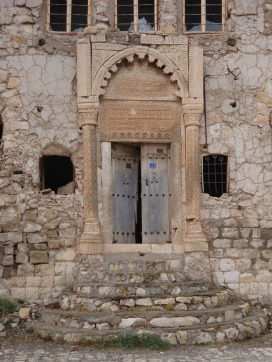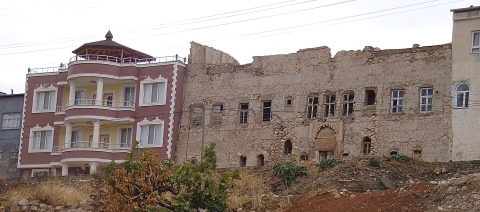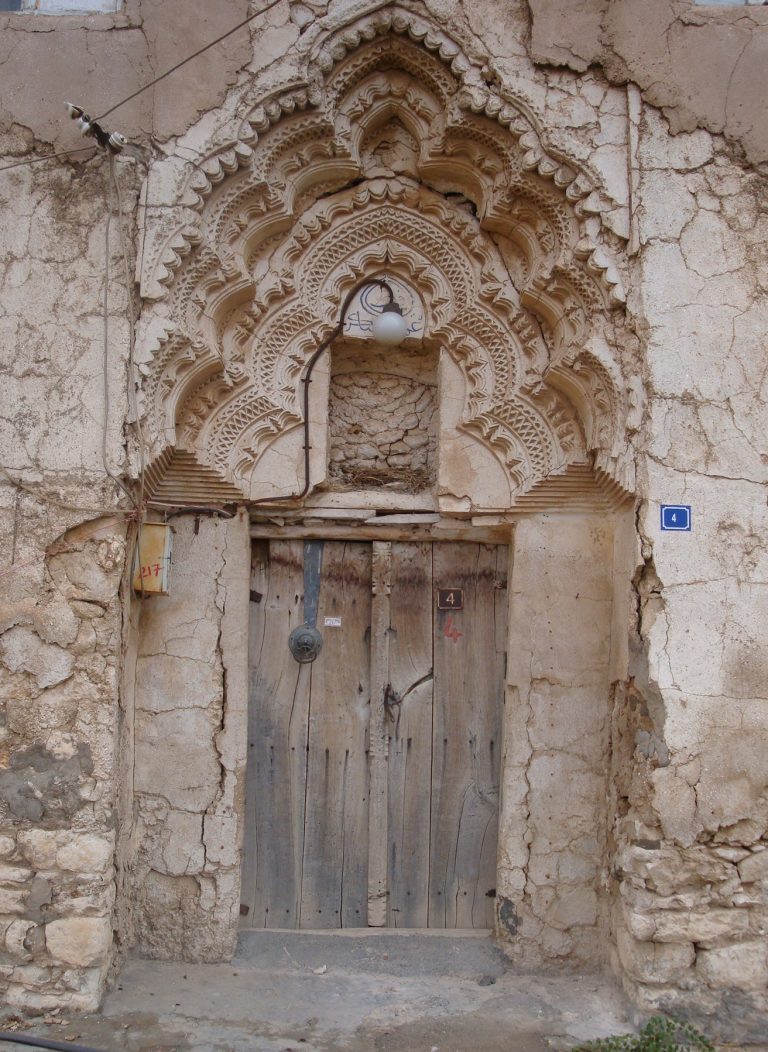“High Souls” (Suryani)/”High Place” (Arabic) Population: 2,000
Most famous sons: İbrahim Hakkı Erzurumi, İsmail Fakirullah
Pretty little Tillo is to Siirt what Şirinçe is to Selçuk or Cumalıkızık to Bursa, namely a smaller, more architecturally cohesive settlement to which locals retreat at weekends to soak up the country air. The big difference is, of course, that, Tillo being near to Siirt, it hardly sees a foreign visitor from one year to the next. Were it in the west of the country it would be completely mobbed with coach parties and boutique hotels would be opening on every street corner. That they’re not is bad news for the local economy but good news for adventurous travellers who like to feel that they’re one step ahead of the crowd.
Dolmuşes will carry you up into the beautiful hill country above Siirt and deposit you in the main square of a village that boasts even finer examples of the “cas (plaster-faced)” houses that are a feature of old Siirt, as well as the beautiful shrine of a pair of famous holy men. Probably the more famous of the two was İbrahim Hakkı Erzurumi who was actually borne in 1703 in the village of Hasankale, now Pasinler, just east of Erzurum. İbrahim and his father, Mullah Osman, came to Tillo to study under İsmail Fakirullah (1655-1734), a scientist and spiritual leader who belonged to a Sufi order called the Oveyssis that had its roots in Yemen.
Like his leader, İbrahim became a scholar adept not just in Islamic jurisprudence and theology but also in medicine and astrology. He’s best known for a book called the Marifetname (Book of Gnosis), a sort of Whitaker’s Almanac of the 18th century setting out everything that was known about subjects as diverse as anatomy, geography and philosophy.
Later in life he moved to İstanbul where he worked in the imperial library of Sultan Mahmud I. When he died in 1780 he was buried beside İsmail Fakirullah in the tomb he had had built for his mentor.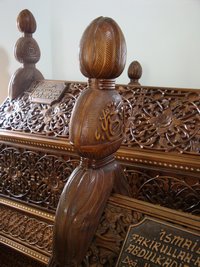
It goes without saying that there’s not much of a tourist infrastructure here: no hotels, no cafes, no restaurants serving local delicacies and certainly no handy souvenir shops (although there are religious mementoes on sale).
For the time being Tillo is a taste of the real rural life of a forgotten corner of south-eastern Turkey. Go there soon before inevitable modernisation sweeps over it. Since my last visit a huge new Koran school has already been built here…
Around town
The shrine that is Tillo’s main drawcard is housed inside a honey-coloured modern building with a polygonal tower in a lovely graveyard full of picturesque Ottoman-era tombs where the silence is punctuated only by the sound of woodpeckers drumming on the trees.
The graves of the two holy men are protected by exquisitely carved wooden caskets with finials that look like those at the end of pews in medieval English churches, surely some of the most beautiful pieces of contemporary woodwork to be found in Turkey.
Buried in the outer rooms of the mausoleum are some of their associates whose resting places are recorded by much simpler stone markers.
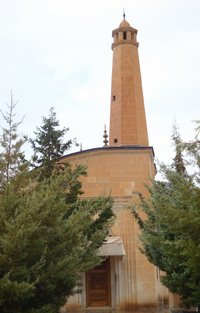 Although the present shrine has a wonderful peacefulness about it, its construction caused one great loss. Until it was built in 1964 the first rays of the sun at the equinoxes (21 March and 23 September) would bounce off a tower and then shine straight through a window in the old mausoleum onto İsmail Fakirullah’s headstone. The good news is that in 2011 this system was successfully restored by carving a small additional window into the shrine. The sun now once again shines through the tower onto his burial place.
Although the present shrine has a wonderful peacefulness about it, its construction caused one great loss. Until it was built in 1964 the first rays of the sun at the equinoxes (21 March and 23 September) would bounce off a tower and then shine straight through a window in the old mausoleum onto İsmail Fakirullah’s headstone. The good news is that in 2011 this system was successfully restored by carving a small additional window into the shrine. The sun now once again shines through the tower onto his burial place.
Locals will point you in the direction of a small private museum inside an ordinary apartment block where you can learn more about İsmail Fakirullah’s scientific work, albeit in Turkish only.
Another fine shrine is attached to the side of the Sultan Memduh Cami. It is that of Gavsul Memduh (1761-1847) and his sons, and it’s decorated with magnificent railings to which are attached two small glass globes, one containing coloured fragments supposedly intended to represent heaven while the other contains darker fragments to represent hell. A third globe that was empty to represent life on earth has been stolen. Even the metal gate leading into the shrine is magnificent.
Most of the weekend visitors who come to Tillo have their sights firmly set on visiting the shrine. However, non-Muslim visitors may be more interested in the village itself, a crumbling but evocative reminder that not so very long ago every region of Turkey boasted its own indigenous style of architecture.
In Tillo, as in Siirt itself, that style of architecture consisted of mini tower-houses that looked as if they were made of mud-brick but were in fact built of rubble faced with cas, a type of plaster made out of locally quarried gypsum. Most of the houses were two or three storeys high with flat roofs and highly decorated window and doorframes. The gypsum itself was adorned with incised patterns, some of them quite complex but most of them looking like the footprints left by the cloven hoof of a deer.
Just as in Siirt, the cas houses are slowly disintegrating under the pressure of rain and snow, and, just as in Siirt, the result is that many have been abandoned, including some truly spectacular examples.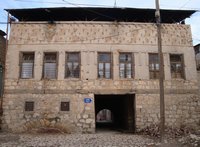 Two such examples stand right at the top of the village near a modern mosque. The carvings around their doorways are extraordinarily rich, reminiscent indeed of carvings to be seen in the cathedrals of Western Europe.
Two such examples stand right at the top of the village near a modern mosque. The carvings around their doorways are extraordinarily rich, reminiscent indeed of carvings to be seen in the cathedrals of Western Europe.
Inside, the walls are covered with simple but attractive abstract murals in vivid colours. Even the windows are inset with grilles each bar of which is topped off with a trident-like finial. The rooms are quite small which might make conversion into hotels tricky but it’s a crying shame to see the incongruous Ankara-style houses that have been built right up against some of them whose owners understandably rate modern conveniences far above picturesqueness.
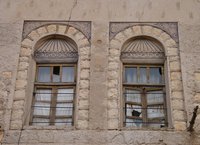 The cas houses on their own would be reason enough to visit Tillo but their setting is made all the more attractive by the fact that some of the winding streets still retain their original cobblestones, big flat slabs of limestone.
The cas houses on their own would be reason enough to visit Tillo but their setting is made all the more attractive by the fact that some of the winding streets still retain their original cobblestones, big flat slabs of limestone.
Just as in Şirinçe the hillside setting means that there are some lovely views to be had from the village, especially in summer when the surrounding orchards fill up with fruit. This is a part of the country that is well known for its juicy pomegranates as well as for some particularly plump pistachios good enough to give Gaziantep a run for its money.
Sleeping
Forget it! Head back to Siirt.
Transport info
Old-fashioned dolmuş taxis to Tillo leave from near the battered Hotel Büyük on the Siirt main drag, Şeyh El-Hazin Bulvarı. They are not marked as taxis, nor are they yellow, but hopefully you will recognise them from the people hopefully hanging about on the pavement.
